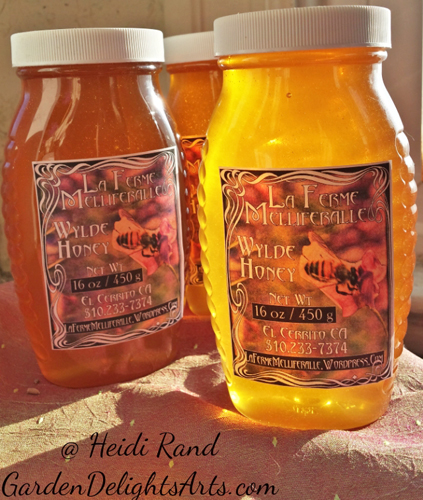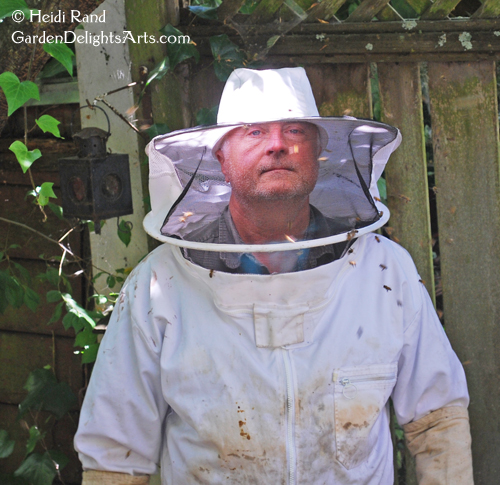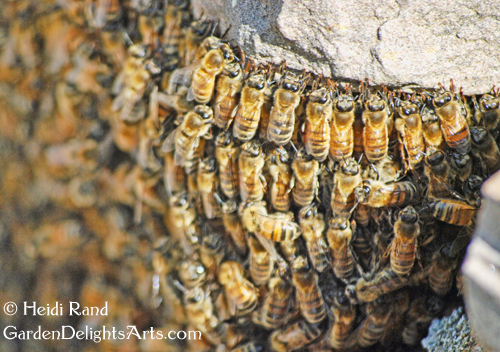When our honeybees bless us with an abundance of beeswax, George thanks them, takes a bit they don’t need and filters it, then gets busy making candles! New this year: he’s handmaking 100% pure, natural beeswax tapers, votives, and bars.

The gorgeous tapers are two sizes, either eight or ten inches tall, and the 10″ tapers are colonial style. The votives are 1.5 by 1.5 inches. Beeswax candles are hypoallergenic, clean- and long-burning, and smell heavenly! We estimate the tapers’ burn times at about ten hours (for the 8″) and 12 hours (for the 10′).

Also new this year, pure one ounce beeswax bars, perfect for so many household and artsy crafters’ uses!

Can’t wait to get some of George’s candles? Won’t be able to make it to our holiday show (first two weekends of December, at our studio in El Cerrito)? Email to ask us to figure shipping costs: heidirand@gmail.com.
Check out these useful tips for burning your beeswax candles.
















 Since the bees will have their new home in Joan’s hive, we went to get one of her hive boxes with some frames that her old bees had built on.
Since the bees will have their new home in Joan’s hive, we went to get one of her hive boxes with some frames that her old bees had built on. The bees will be attracted to the leftover honey and wax on the frames, and migrate onto them from the vacuum. With the box on the roof, the bees that didn’t get vac’ed will sense the pheromones and re-join their queen and swarm. It’s a whole-day affair, mostly waiting around to make sure that as many bees as possible are gathered up. Any stragglers will likely go back to their old hive.
The bees will be attracted to the leftover honey and wax on the frames, and migrate onto them from the vacuum. With the box on the roof, the bees that didn’t get vac’ed will sense the pheromones and re-join their queen and swarm. It’s a whole-day affair, mostly waiting around to make sure that as many bees as possible are gathered up. Any stragglers will likely go back to their old hive.
 George visits often and always finds them calm and happily coming back to the hive with pollen. The design of the hive makes it very easy for George to check on the girls. Here’s the Queen!
George visits often and always finds them calm and happily coming back to the hive with pollen. The design of the hive makes it very easy for George to check on the girls. Here’s the Queen!




 Well, actually the baklava made by George is the REAL reward!
Well, actually the baklava made by George is the REAL reward!







